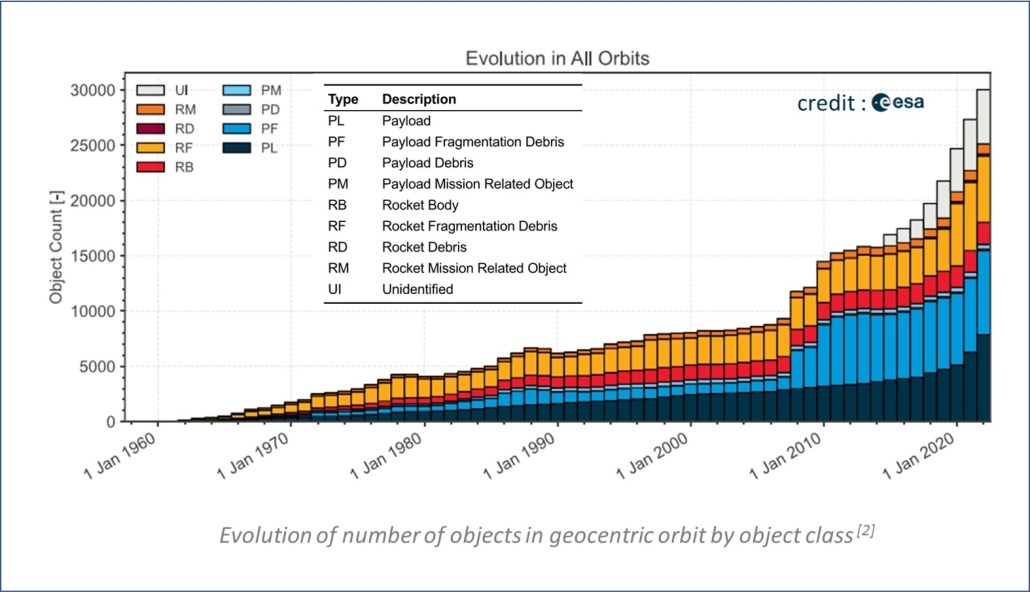ATD3 Workshop 2022
The AeroThermoDynamics and Design for Demise (ATD3) Workshop managed by ESA and CNES will take place in Bordeaux from 27 to 28 October 2022. HyFAR-ARA is locally in charge of the Workshop organisation.
The congestion of the terrestrial orbits
Since the launch of the first Sputnik in 1957, more than 6,000 rockets have put into orbit nearly 13 000 satellites, of which about 8000 are still present (active or inert).
A galore of debris adds up to these objects [1]: more than 600 destroyed satellites (explosions, collisions…), launcher stages and various debris (launcher elements, tools…). A total of approximately 36,000 objects larger than 10cm, representing nearly 10,000 tons, are circulating today in Earth’s orbits.
The creation of satellite constellations worth thousands of objects (Starlink…) has made these numbers soar (see figure below [2]), with the risk of a rapid saturation of useful orbits as well as an increase in the risks of collisions and debris production.

Object in terrestrial orbits (credit ESA)
Actions to limit the risks of congestion
In order to reduce these risks and to allow a sustainable exploitation of space, nations and their space agencies have taken measures. France, for instance has implemented in 2008 the so called law “relative aux opérations spatiales” (LOS : Law relative to Space Operations), which makes mandatory for the industry to clear the useful terrestrial orbits of their satellites at the end of their life, either by sending them to distant “parking” orbits, or by destroying them by causing their re-entry in the atmosphere.
The “re-entry into the atmosphere” option requires the operators to demonstrate that this is done without risk to the population, i.e. that the debris created by this re-entry either do not reach the ground, or arrive there with a size and a velocity that reduces the probability of damage to infinitesimal values.
Taking this constraint into account has consequences for the design of satellites. It has led to the emergence of the notion of “design for demise”, which covers the choice of concepts allowing to limit the size and speed of the debris created, as well as the experimental tools and numerical simulation tools thanks to which the absence of risk is demonstrated.
The ATD3 Workshop
[1] https://www.esa.int/Safety_Security/Space_Debris/Space_debris_by_the_numbers , issue of 4 April 2022
[2] : ESA’S ANNUAL SPACE ENVIRONMENT REPORT – GEN-DB-LOG-00288-OPS-SD – 22 avril 2022 https://www.sdo.esoc.esa.int/environment_report/Space_Environment_Report_latest.pdf



